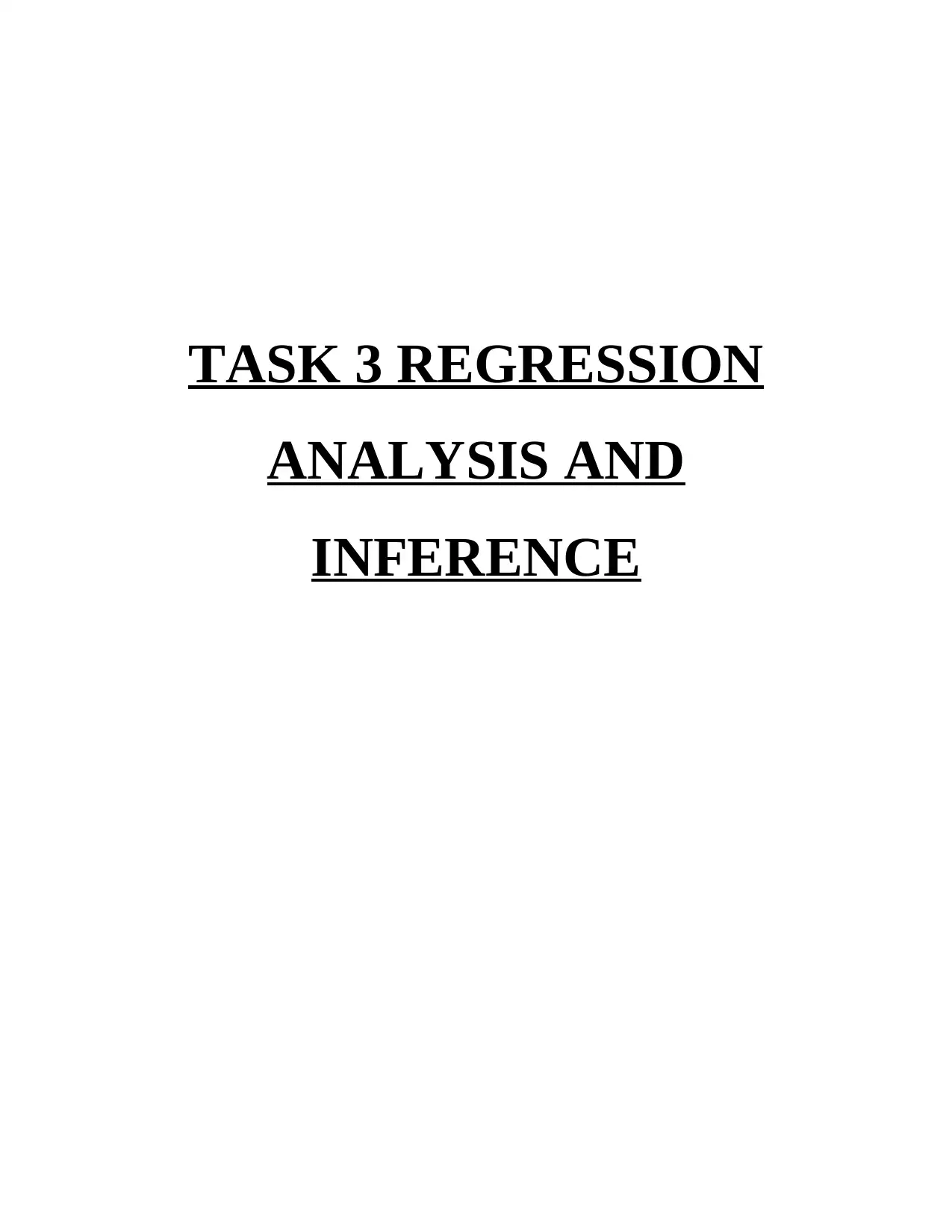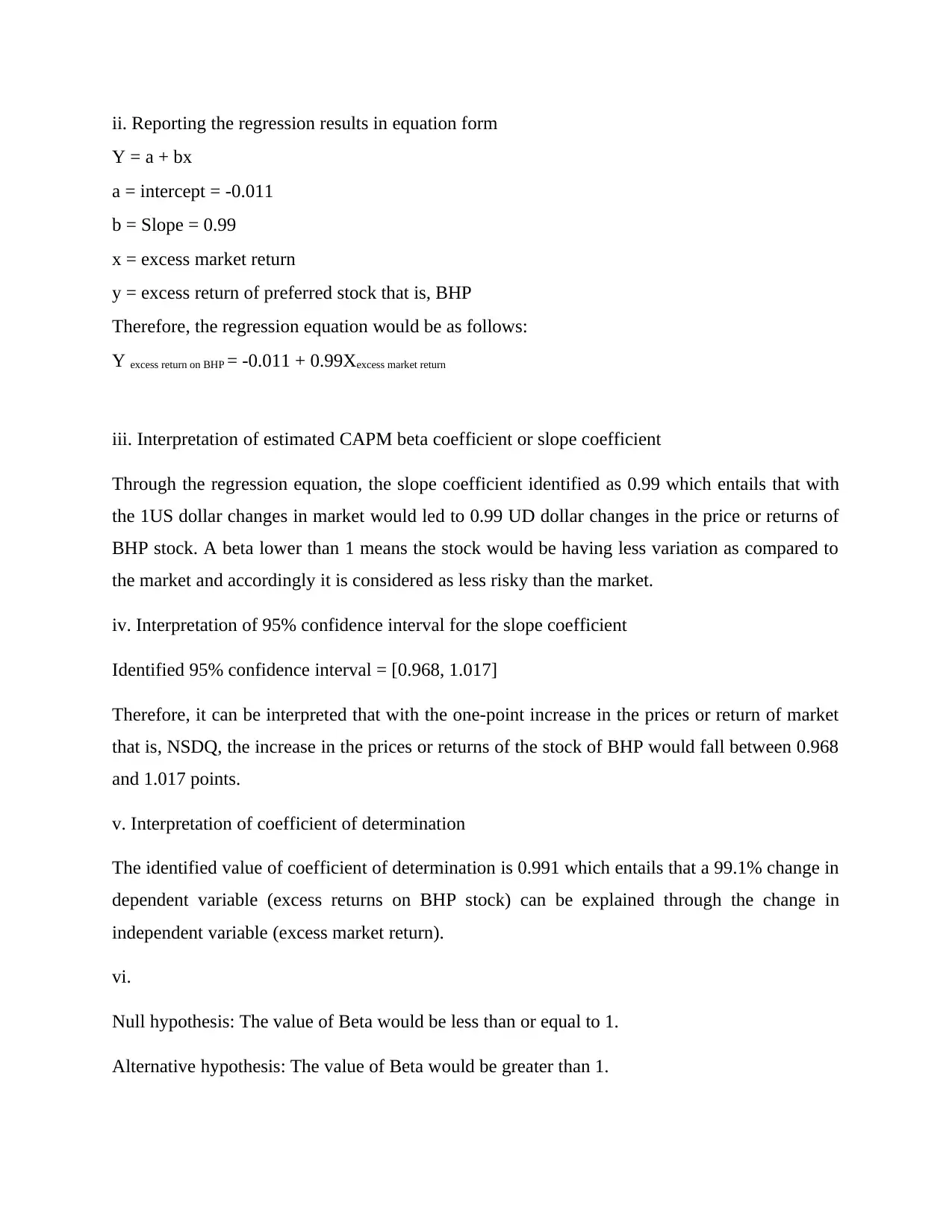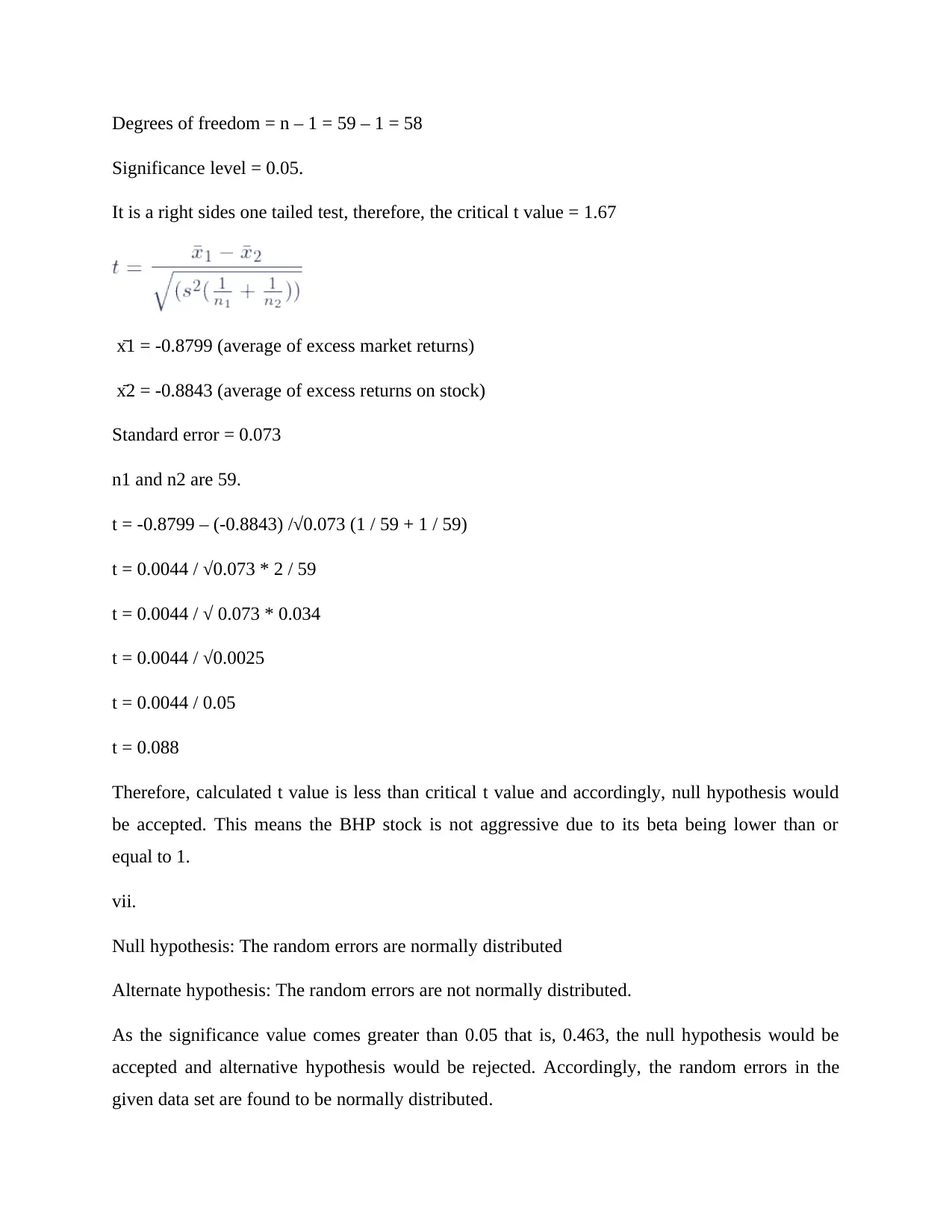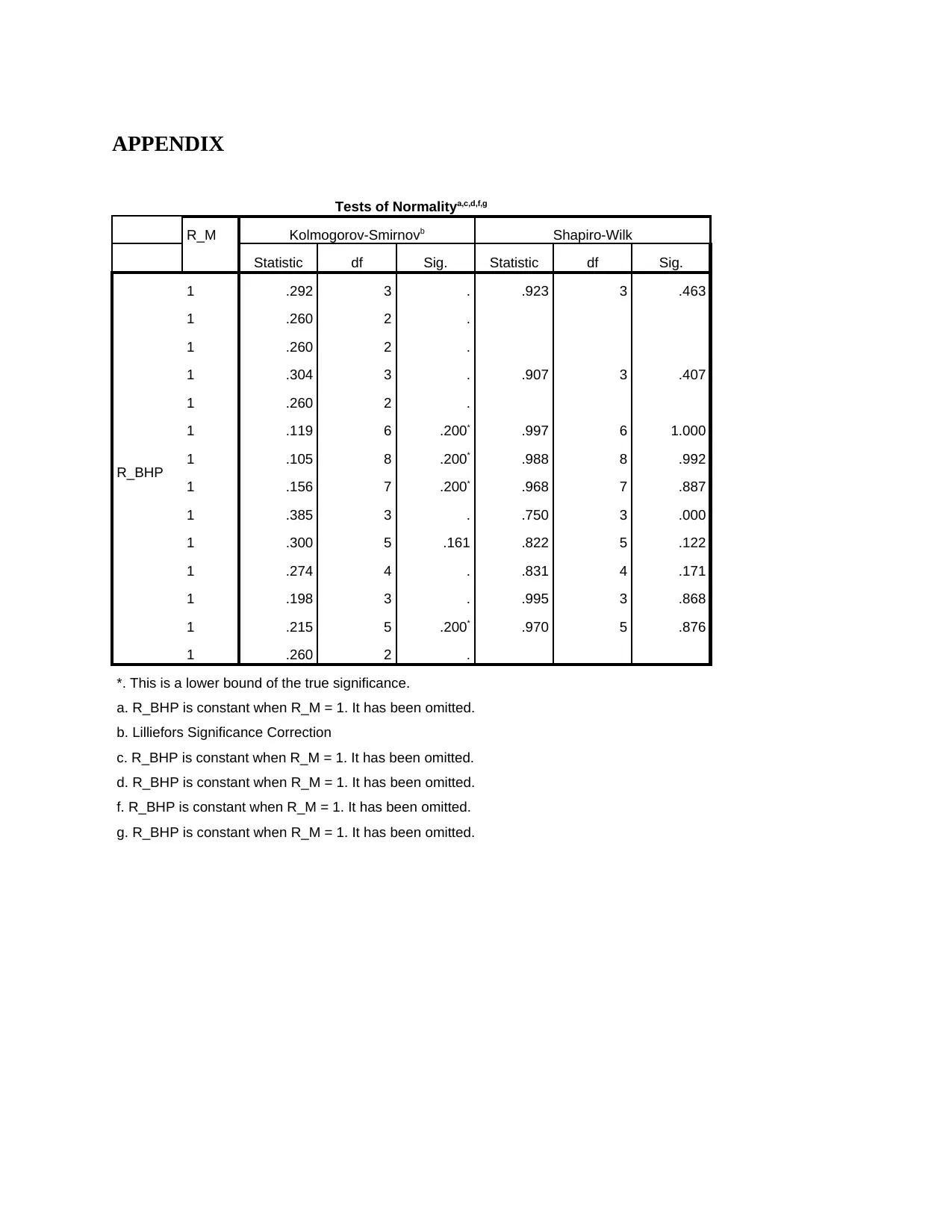CAPM Beta Regression Analysis, Interpretation, and Hypothesis
VerifiedAdded on 2023/06/04
|4
|707
|76
Homework Assignment
AI Summary
This assignment analyzes the Capital Asset Pricing Model (CAPM) beta through regression analysis. The solution presents the regression equation, interprets the slope coefficient (beta), and explains the 95% confidence interval and the coefficient of determination. It also includes a hypothesis test, formulating null and alternative hypotheses, calculating the t-value, and interpreting the results to determine whether the stock is aggressive based on its beta. The analysis further examines the normality of random errors using statistical tests, with the results presented in an appendix. This comprehensive analysis provides insights into the risk and return characteristics of a stock relative to the market.
1 out of 4










![[object Object]](/_next/static/media/star-bottom.7253800d.svg)